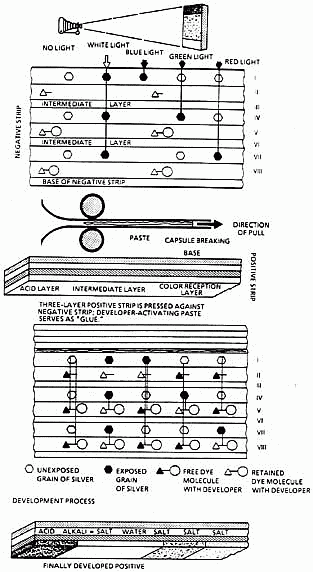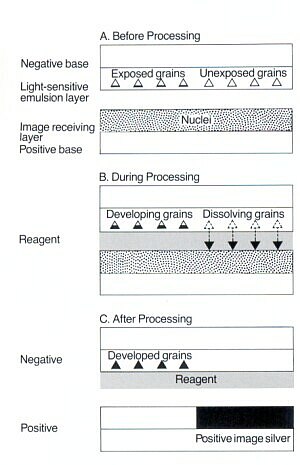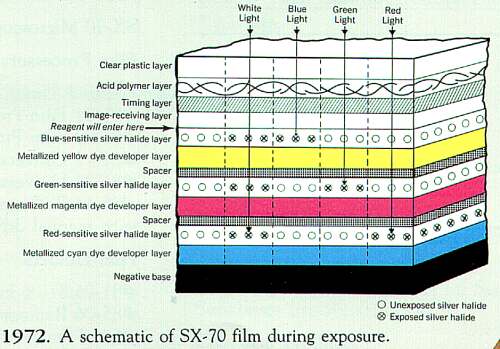This is where the development process happens. The following explanation describing colour pictures is a little complicated, but the diagram may help in understanding the process, though it took me a while to figure it out. I got the bulk of this explanation from Land's Polaroid by Peter C. Wensberg, page 217:
- Three primary colors form an image in color photography: blue, green, and red; their complementary colors are yellow, magenta, and cyan. Successive layers of emulsion were coated on a negative base, three of which are silver halide emulsions; one sensitive to blue light, one sensitive to green, one sensitive to red.
- Beneath each of the emulsion layers was a layer of dye-developing molecules in the complementary colors.
- When blue light struck the negative, it exposed the blue-sensitive emulsion layer that blocked the dye-developers immediately below it, in this case yellow, from transfering color to the positive sheet.
- The magenta and cyan dye-developers, however, were free to pass through to the receiving sheet, where they were mixed to form a blue image.
- When green light reached the green-sensitive layer, the magenta dye-developers beneath it were blocked, but the cyan and yellow dye-developers were allowed to move to the positive, where they formed green.
- In the same way, red light blocked the cyan dye, but allowed magenta and yellow to combine on the receiving sheet to form red.


